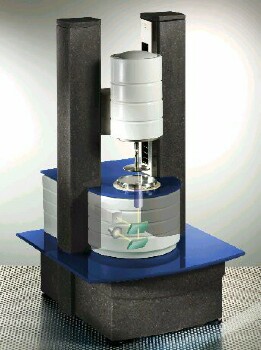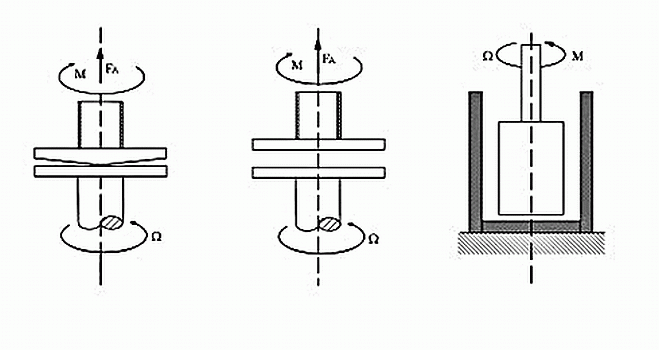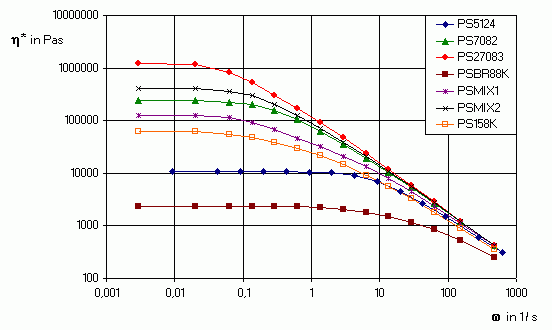Objective
During manufacturing, processing and application fluids are exposed to flow fields with very different shear rates ranging from 10-4 s-1 (sedimentation) to 106 s-1 (high speed blade coating). Not only polymer melts, but also various other fluids, like concentrated polymer solutions and gels, or dispersions and emulsions exhibit strongly non-linear and non-Newtonian flow behavior including shear thinning, dilatancy, yield stress, thixotropy and viscoelasticity. These features have to be characterized carefully with respect to the process under consideration. This can be done very precisely using rotational rheometry up to shear rates of 103 s-1. For higher shear rates capillary viscometry is used. Furthermore, rotational rheometers are widely utilized in oscillatory shear mode to characterize linear viscoelastic fluid properties (in terms of the storage and loss modulus, G’ and G’’, respectively). Plate-plate and cone-plate rheometers can also be used to determine additional viscoelastic features like the first and second normal stress differences. This wealth of information provides useful insight into molecular as well as mesoscopic structures or interations in complex multi-component fluids.
Operating Principle
The fluid is sheared in a narrow gap between concentric cylinders, parallel plates or a cone and a plate. The viscosity is defined as the ratio of the shear stress and the shear rate. The stress is related to the torque and the shear rate to the angular velocity. One of these quantities is preselected the other is measured, depending on the set-up of the instrument (controlled stress / controlled strain). A great variety of tools is available to cover a large viscosity and shear rate range. Elastic material-functions can be obtained from axial forces acting perpendicular to the plane of shear in cone-plate or plate-plate geometry. Rotational rheometers allow for numerous experimental modes controlling either shear rate, shear deformation or shear stress.


Specifications
|
Shear rate range: |
10-5 s-1 – 103 s-1 |
|
Frequency range: |
10-3 Hz – 102 Hz |
|
Temperature range: |
-190 °C – 600 °C |
|
Sample volume: |
1 ml – 50 ml |
Applications
- Design of pumps and pipelines
- Mixing and agitation of dispersions and solutions
- Application of coatings, inks and adhesives
- Manufacturing of cosmetic and pharma formulations
- Polymer processing
- Food processing

Fig. 2 Viscosity functions of polystyrene melts with different molecular weight distributions at 180°C
Literature
W. Gleissle, B. Hochstein; J. Rheol. 47(4) (2003) 897-910
B. Dames, B. Morrisson, N. Willenbacher, Rheol. Acta 40 (2001) 434-440
Kramer, R. Brummer, B. Hochstein, H. Buggisch
Proceedings of the XIIIth International Congress on Rheology, Cambridge, UK, 2000, 4-336 – 4-338
B. Hochstein; Institut für Mechanische Verfahrenstechnik und Mechanik, Dissertation Universität Karlsruhe (TH); 1997
N. Willenbacher, T. Frechen, H. Schuch, B. Lettmann, European Coatigs Journal 9(1997), 810-814
M. Baumgärtel, N. Willenbacher, Rheol. Acta 35 (1996) 168-185
N. Willenbacher, J. Colloid. Interf. Sci. 182 (1996), 501-510
